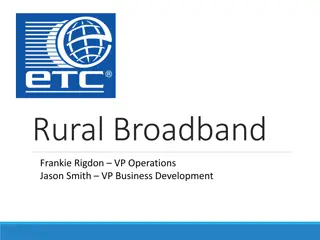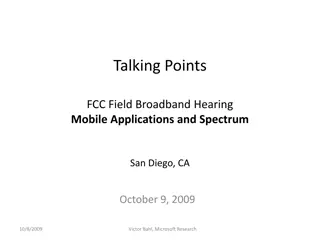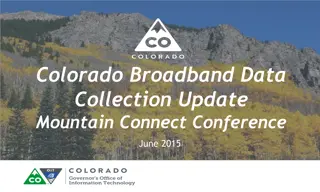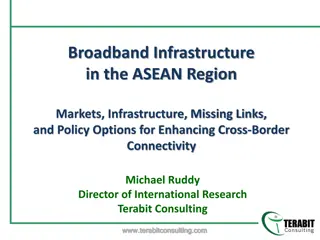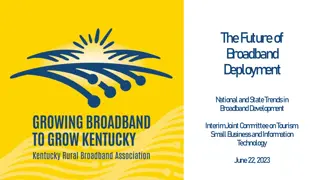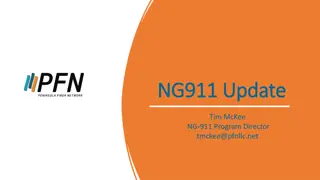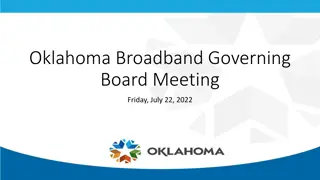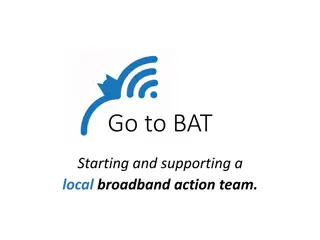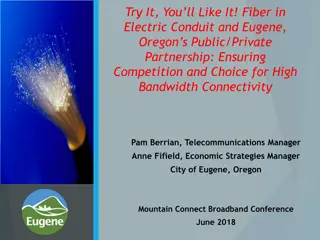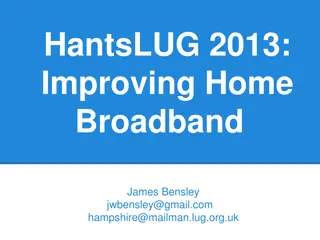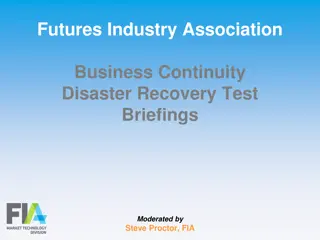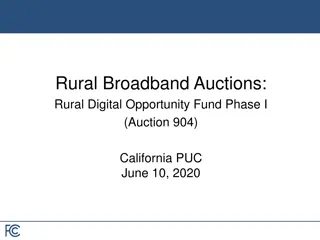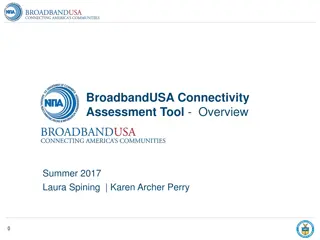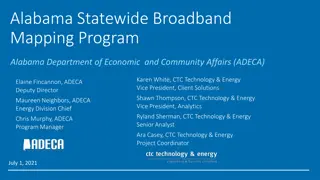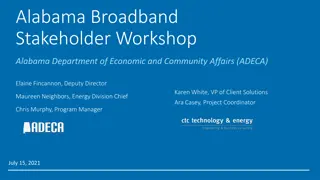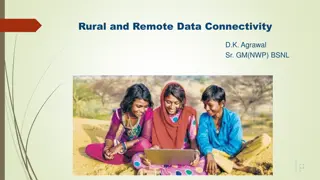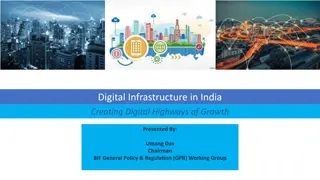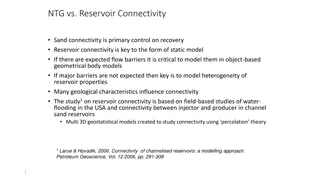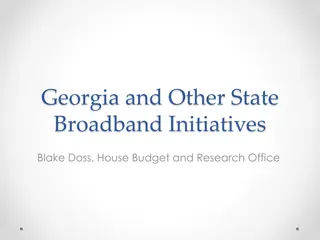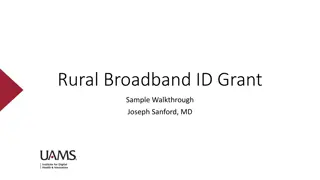Broadband in India: Enhancing Connectivity and Economic Growth
India's broadband landscape is pivotal in driving economic growth and societal progress. With a vast administrative setup and a burgeoning population, the country's telecom scenario and demographic profile underscore the importance of broadband accessibility. The data usage patterns, smartphone penetration, and the evolving digital ecosystem reflect the rapid pace of technological adoption among Indian users. Recognized as a key driver of economic competitiveness, broadband plays a crucial role in fostering inclusive growth, job creation, and innovation. Understanding the significance of broadband beyond mere high-speed connectivity is essential for realizing its full potential in transforming societies and industries.
Download Presentation

Please find below an Image/Link to download the presentation.
The content on the website is provided AS IS for your information and personal use only. It may not be sold, licensed, or shared on other websites without obtaining consent from the author.If you encounter any issues during the download, it is possible that the publisher has removed the file from their server.
You are allowed to download the files provided on this website for personal or commercial use, subject to the condition that they are used lawfully. All files are the property of their respective owners.
The content on the website is provided AS IS for your information and personal use only. It may not be sold, licensed, or shared on other websites without obtaining consent from the author.
E N D
Presentation Transcript
1 USOF for Broadband INDIA EXPERIENCE
2 India Administrative Setup Population 1.28 Billion 72% Rural 32,87,263 Sq. Km Area States + UTs 29 + 7 Districts 651 Blocks 6612 Village Panchayats Villages 2,65,000 6,40,930
3 PRESENT TELECOM SCENARIO (SOURCE: TRAI) 31-03-2014 933 Million 01-07-2015 1002 Million Total Telephone subscribers Tele-density Urban Tele-density Rural Tele-density Broadband subscribers 75.23 % 145.78 % 43.96 % 60.87 Million 79.67 % 148.90 % 48.60 % 104.96 Million
4 India Demographics 1.28 Billion Population (17.31% of world s population) Below 25 years 50% Below 35 years 65% Rural Areas 72.2% (6,40,000 Villages) Urban Areas 27.8% (5,500 Towns & Urban Agglomerations) Active Internet Users 18% (232 Million) Active Rural Internet Users 5.4% (69 Million) Digital Buyers 53 Million Digital Buyers (Rural Areas) 13 Million Smartphone Users (Age 31-40) 10% in 2013 to 30% in 2015 1.53 Billion Projected Population (2030)
5 India Smartphone Data Usage Percentage of Users Percentage of Users Video Streaming 70% Social Networking 61% Download & Save - Music / Videos 54% Instant Messaging 54% Browse / Search 46% Emails 45% Music Streaming 40% Banking 36% Online Games 35% Navigation 32% Cloud Storage 27% Bill Payment 25% E-commerce 17% 0% 10% 20% 30% 40% 50% 60% 70% 80% 5
6 Why Broadband? 1.38 Recognized as a key driver of economic growth and national competitiveness 1.21 1.12 Every 10 percentage point increase in broadband penetration in low and middle income countries accelerates economic growth by 1.38 percentage points 0.81 0.77 0.73 0.60 0.43 Leads to creation of jobs and new businesses Deep and widespread social impact Fixed Telephony Mobile Telephony Internet Broadband Delivery of public services health care, education, electronic voting, land registration etc High Income countries Low and Middle Income Countries Leads to inclusive growth Source: World Bank Report on Broadband 2010
7 So what is Broadband? Is it just a network delivering high speed connectivity? A communication network by itself cannot bring the required benefits Broadband is better defined as an ecosystem comprising of Network Services and Users Network Users Services Losing focus of any one of the components of the ecosystem leads to incomplete policies and therefore unmet objectives These components interact with each other to create a cycle of positive feedback resulting in wide spread economic benefits
8 Network a necessary first step Offer network as a shared service Network forms the first layer of broadband ecosystem Network itself can be viewed as comprising of multiple layers owned by different entities Active Infrastructure Multiple Technology Options Fiber Network (Underground / Overhead) Microwave Satellite Network Design Considerations Network Scope, Optimum capacity, Reliability, Cost, Centralized Management, O&M, SLAs Passive Infrastructure
9 Services The product & Business Models Network enables delivery of digital services Government Services (G2C, G2B, G2G) Telecommunications, Internet services, Cable TV, Telemedicine, e-Education, Banking and many more Services that can be offered are constrained by the capacity, reach and reliability of the network Proliferation of services by offering the infrastructure as a service through multiple business models Fiber leasing Bandwidth wholesale Auctioning
10 Users the consumers Users refers to End user devices that are used to consume and render services laptops, mobiles, tablets etc. Users themselves who need to be made aware about the availability of services and trained on how to use them Provides the Pull for services Provides the positive feedback necessary for proliferation of broadband and related economic and social gains More users, more services and therefore better utilization of network
11 Broadband Evolution & Growth Framework Phase 1 Phase 2 Phase 3 Household Broadband Penetration 50%-60% Level of Policy and Regulatory Intervention 10%-20% Year 1 Year 3 Year 5 Year 7 Year 9
12 USOF Genesis in India One of the objectives of the NTP 94 was Universal service : provision of access to all people especially villages. New Telecom Policy (NTP) envisaged development of telecom facilities in remote, hilly & tribal areas and provision of universal services to all uncovered villages. TRAI recommendations in 2002 for establishment of USOF & USL @5% of AGR of the TSPs except pure VAS providers Universal Service Support Policy (USSP) came into effect w.e.f. 1.4.2002. USOF is a non-lapsable fund, has been established to provide the people access to telecommunication services at reasonable and affordable prices in the rural and remote areas of the country.
13 Need for USOF Subsidy
14 India USOF Objectives Economic: Network extension & stimulate uptake of the ICT services Social: Mainstreaming the underserved & un-served areas/groups by bridging the 'Access Gap' Political: to enable citizens exercise their political rights in an informed way Constitutional: Equitable distribution of the fruits of the telecom/digital revolution and fair allocation of national resource (pooled USO levy) via targeted subsidies
15 USOF Disbursements Fund to be utilised exclusively for meeting Universal Service Obligation i.e. obligation to provide access to telegraph services to people in the rural and remote areas at affordable and reasonable prices. Central Government has the power to administer the Fund in such manner as may be prescribed by rules made under this Act. The Central Government shall be responsible for the coordination and ensuring timely utilisation and release of sums in accordance with the criteria as may be prescribed by rules made under this Act. Financial Support from the Fund shall be provided to meet the Net Cost of providing the specified Universal Service Obligation as per the procedure specified by the Administrator from time to time, and the period for which such support shall be provided and the services covered shall be governed by an Agreement entered into with the Universal Service Provider. "Net Cost" means Operating Expenses plus Capital Recovery minus Revenue. Administrator, USOF has powers, inter alia, to settle the (subsidy) claims of the Universal Service Provider after due verification, and make disbursements accordingly from the Fund and to monitor the performance of the Universal Service Provider
16 USOF Stream of Activities Provision of Public Access Service: Provision of Household Telephones in Rural and Remote Areas as may be Determined by the Central Government from Time to Time Creation of Infrastructure for provision of Mobile Services in Rural and Remote Areas Provision of Broadband Connectivity to rural & remote areas in a phased manner Induction of new technological developments in the telecom sector in Rural and Remote Areas Creation of General Infrastructure in Rural and Remote Areas for Development of Telecommunication facilities
17 Need for a National Broadband Network NOFN Land Records Birth/Death Certificates UID based services NREGA Online medical consultations Medical records Pan India exchange of patient information e-healthcare e-governance Availability of Internet services to villages Delivery of Internet by Common Service Centres Quality education delivery Digital literacy programmes Public Internet Access e-education Rural banking through online transactions and ATMs Online purchases and transactions for bill payments, tickets etc. Large scale employment generation through operation and maintenance activities, BPO services, rural entrepreneurship etc. Employment Generation e-commerce
18 NOFN aims to reach the bottom of the pyramid 28% population (largely urban) Reaches 1.2 Million KM existing fiber Will Reach 72% population (largely rural) 0.7 Million KM new fiber under NOFN 1 8
19 Project Features People in remote rural areas of India > 1.2 million KMs of fiber network (50% to be laid fresh) Scale of Infrastructure > 100 million immediate beneficiaries Intended Beneficiaries >250K end points Citizen Service Providers Funding and Regulatory Agencies Implementation Partners (Govt & Private) Affordability Key Multiple Stakeholders Non Discriminatory Considerations Long Term Operability and Sustainability
20 NOFN Program Structure (Key guiding principles) Guiding Principles for Project Implementation, Operations, Utilization & Maintenance No Monopoly Non discriminatory access Consistent operation nationally Centralized NMS & NoC Implementation by CPSUs Incremental Cable to be laid (Av 2.4 Kms / GP). Existing Fibers of CPSUs to be used (Av 3 Kms per GP). Key Guiding Principles Linear Network GPON technology, Optical tree structure Centre State joint effort No RoW charges by State Govts Except Tamil Nadu Service Providers participation (TSPs, ISPs etc) - Provide Block to District connectivity - Provide Services at Gram panchayats. ~$4 Billion Funding by USOF Govt Of India Competitive Price Discovery ensuring network is rolled out at optimal cost
21 Key challenges faced in NOFN implementation Speed of Execution Availability of execution agencies Trained manpower Power supply & space at GPs RoW Key Challenges permissions Availability of GPON Equipment Location of Existing Fiber Availability of Stores
22 Sustainable Finance Model Foundation Stone for NOFN Funding Private Investment USOF Funding Last mile (partial) Content & Services Project Opex (limited duration) Last Mile Middle Mile Capex End user Devices Sustainable Finance Model Sustainable Growth Ecosystem End User Service Demand Economic Growth Telecom Investment Innovative Services Telecom Services
23 Thank You


